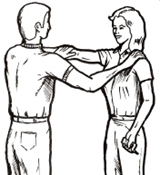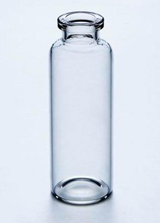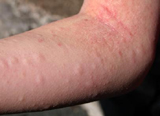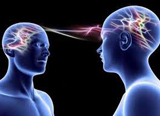ALTERNATIVE HEALING
Creating a healing atmosphere within centres and for a spiritual community: an investigative study — II
Abstract
Following on from the previous article, this part examines procedures by which the healing atmosphere known as IBEF (Integral Bio-Energetic Field) was generated at four centres and Auroville. It summarises how the bio-energetic vial for IBEF was produced, its core elements, the induction of IBEF into the centres and Auroville, IBEF verification, its healing benefits and related aspects. The conclusion considers starting additional centres in selected locations, especially within areas of poverty and destabilisation.
Introduction
As a pilot study, the investigation was designed to develop and create a healing atmosphere (IBEF) at four centres in northern California and at Auroville, the Integral Yoga community in southern India.
Review
A brief review of the two IBEF components may serve to broaden the reader’s perspective. It is recommended that Part 1 be re-examined so as to deepen and refresh understanding of the two basic components (1).
The healing atmosphere (IBEF) was developed and induced at each of the centres by employing two core procedures. They were:
a. Applied Kinesiology (AK), a form of muscle-testing to identify energetic imbalances within body components, followed by AK techniques to restore overall balance; and
b. Nambudripad Allergy Elimination Technique (NAET), a method to detect and eliminate allergies, which has been shown to be effective in controlled experimental studies.
As used by alternative healers and physicians, AK represents a tool to assess the body’s bio-energetic health status. Its muscle-testing is conveyed to the brain, as a pattern of harmony or disharmony. If the energy body is balanced, there is normal muscle strength, if imbalanced, it manifests as a degree of muscle weakness. For the testing, the recipient holds out one arm and the practitioner applies gentle pressure on the wrist to detect the strength or weakness. The wellness of body components can thereby be tested, as well as allergic reactions and emotional issues.
An alternative testing is known as ‘question-response-technique’ (QRT). The subject (recipient or self) asks a health-related question, followed by muscle-testing, using the arm (as described above) or by self-testing (e.g. the middle finger tip upon the nail of the forefinger). Relative strength indicates a ‘Yes’ answer, and weakness a ‘No’ answer.
NAET uses forms of AK testing to determine whether or not:
a. the recipient is energetically balanced; and
b. the presence of an allergic substance, which leads to blockage in one or more energy channels (known as meridians in Oriental medicine). Upon identifying the meridian blockage, NAET treatment applies an acupressure (and possible acupuncture) procedure designed to clear the meridian blockages. Several sessions are usually needed in order to eliminate a series of identified allergies. Thereafter self-testing followed by basic acupressure can sometimes be used to eliminate minor allergic reactions. More serious or chronic reactions, however, would require treatment by a qualified NAET practitioner. It has been shown that NAET can address and resolve a wide range of allergy-related health disorders. As such, it may be regarded as an adjunct, though not a substitute, for regular medical diagnosis and treatment.
Overview
This article examines several aspects:
1. how IBEF was developed by applying the two core procedures described in Part 1;
2. IBEF introduction (induction) at the four centres and for Auroville;
3. IBEF verification involving multi-dimensional healing dynamics. Additional evaluation of IBEF based on case studies will be discussed in Part 3 of the article, slated to appear in the next issue of NAMAH; and
4. IBEF healing benefits and enhancements.
Integral Yoga guidance
From the start of the project, the investigator has invoked the Divine Mother for the necessary guidance in accordance with the Integral Yoga’s (Sri Aurobindo) teachings. IBEF is viewed as an exploratory project of higher consciousness. From this perspective, we assume that IBEF creation and induction can best be conducted by an investigator who is familiar with and seeks to be an aspirant of the Integral Yoga.
Vial production
To prepare for IBEF creation, the first step was to develop an instrument in the form of a vial filled with water, which had been subjected to designated vibrational-electrical impulses (VEl) by means of an apparatus for this purpose. The VEl, in effect, rearranges the electrical pattern of the water-molecules in synergy with a given bio-incompatible substance (allergen). The water’s molecular structure thereby reflects the vibrational signature of the specified substance or bio-energetic condition. The vial’s correspondence to a given substance/condition can readily be verified by standard muscle-testing (PDM), as explained in Part 1. One could first PDM-test an individual for the actual substance (e.g. sugar) to which he/she is allergic, then PDM-test the individual while holding the vial for the same substance. The PDMs would show weak muscle reactions for the actual allergen, as well as for the allergen vial. By contrast, vials for substances to which a person is not allergic would PDM-test as strong.
A leading organisation whose business is to create bio-energetic vials is Allergies, Lifestyle & Health Company, (AHL). As requested by practitioners, AHL produces specific vials covering a wide variety of substances and chemical imbalances, including combinations thereof. A summary of how the vials are made by AHL is available on its website (2).
IBEF vial
The IBEF vial was generated by ALH involving a combination of eight bio-energetic core elements, as requested by the investigator. The eight elements were derived by employing the Question-Response-Technique (QRT) muscle-testing (as explained in Part 1). Using QRT, the investigator: a) determined that IBEF would consist of eight core elements; and b) QRT identified these elements, with the help of intuitive guidance of the higher consciousness.
Accordingly, the IBEF core elements are as follows:
1. Maintaining a harmonious brain-body-field (BBF) — a balanced flow between mental and physical energy channels. Also bringing about a sustained energy balance among body systems, organs and related components, including cakras and meridian channels.
2. Eliminating allergies, involving reactivity to bio-incompatible substances and related disorders.
3. Eliminating excess toxicity in the physical body’s function.
4. Dispelling pathogens — bacteria, viruses, fungus, parasites.
5. Strengthening the immune system, as needed.
6. Shielding against adverse energy forces at physical, emotional, and mental levels. This shielding includes capacity to detect and eliminate invasive adverse forces or energy bundles known as ‘entities’ in the Integral Yoga (3).
7. Bringing awareness of and support so as to reduce any undue amount of stress.
Among the above IBEF dimensions, there are several causal elements of illness. One of these pertains to identifying and dispelling negative energy, referred to as adverse forces by the Divine Mother and Sri Aurobindo. Such forces may be hidden and vary in intensity, origin, and manner of penetration into the body, e.g. microbes or occurrence of an accident.
Epidemics or pandemics for a given disease may reflect the promulgation of adverse forces. A cogent example is cited by the Mother with regard to a terrible flu plague that took place in Japan during January 1919, which killed thousands of people. The epidemic stopped shortly after the Mother — who at the time was living in Tokyo — had for two days been lying down as she repelled and dissolved an underlying force. The Mother’s struggle and overcoming of the adverse force was subsequently documented by a Japanese newspaper (4).
The second element of illness, expressed with minor disorders, can be categorised as a disharmony within the body (5). This manifests as:
a. blockages within/between energy channels:
b. conflicting energy-flow among organs or body components, toxicity; and
c. deficient energy-flow due to such factors as birth defects, genetic mutation, toxic exposure and injuries.
On a positive note, the combined IBEF dimensions are, as examined below, conducive to a more fulfilling, harmonious and contributing lifestyle for people attending the healing atmosphere centre. Revealed by QRT, such enhanced energy may be transmitted to others and gradually lead to the evolvement of a higher consciousness, accompanied by a deeper, happier, meaningful sense of being.
IBEF induction
The procedure for inducing IBEF into a centre has been demonstrated to be effective as found for case studies to be summarised in Part 3. The investigator believes that the procedure has a spiritual foundation in accordance with the Integral Yoga. As stated earlier, a practitioner seeking to induce IBEF would preferably be
a. familiar with and dedicated to the basic Integral Yoga principles of healing; and
b. invoke divine guidance prior to inducing the healing atmosphere.
The induction consists of four steps, as follows:
1. QRT-test: ”Does IBEF currently exist at the centre”? One can expect a ‘No’ answer.
2. Holding the IBEF vial, ask: “Is permission granted for IBEF to be induced at this centre?” A ‘Yes’ indicates the steps below can be taken; a ‘No’ implies it should be done at a later time.
3. Apply a short NAET procedure, as per a and b below:
a. With the tips of the thumbs pressing between successive vertebrae, on both the right and left sides: start at the top and go down the 12 thoracic and 5 lumbar vertebrae;
b. With the thumb-tips pressing between successive lumbar vertebrae, on both the left and right sides but one inch to the right and left sides, go down the lumbar vertebrae 3, 4, and 5.
4. Repeat step 1. We can expect a ‘Yes’ answer, verifying that IBEF has now been created at the centre, If there is a ‘No’ answer, steps 1- 4 would need to be done again.
Induction verification
There are two methods for additional verification that the IBEF induction has been accomplished. The first method involves three stages, as follows:
1. Identify an individual(s) who, prior to the centre’s IBEF induction, had an allergic reaction (muscle weakness) (e.g., to sugar, salt, dairy-products), as shown by PDM muscle-testing;
2. After the IBEF induction, ask the individual to attend the centre for at least a few minutes;
3. Repeat the PDM testing, preferably after the individual(s) has left the IBEF centre. Assuming the induction was successful, he/she would no longer show an allergic reaction (muscle weakness), thereby verifying the existence of the healing atmosphere at the centre.
The second method is similar and may be more applicable during a current time-period:
a. Identify an individual(s) suspected to have an allergic reaction(s) to a substance who has never attended the IBEF centre (or not after its IBEF induction). While he/she is not present at the centre, PDM muscle-test the individual, to confirm the allergic reaction.
b. Ask the individual to attend the IBEF centre for at least a few minutes.
c. After attending the centre, PDM re-test the individual for the allergic substance. He/she would no longer show an allergic reaction, thus, verifying the centre’s IBEF healing.
Case study examples of verification at the IBEF centres will be included in the evaluation in Part 3.
Re-sets
The investigator’s experience with the healing atmosphere has shown that IBEF needs to be re-set with the above induction procedure over sequential time periods. Following the initial induction, re-sets are necessary after 1 week, 2 weeks and monthly thereafter.
At any given time, one can determinewith QRT-testing (‘Yes’ or ‘No’) whether or not a re-set is needed. The re-set can be regarded as absolute rather than partial. (Symbolically speaking, it is either black or white, not shades of grey.)
IBEF healing benefits
IBEF exposure has healing benefits on multiple levels and will be considered in Part 3 as case studies. The effects can be assessed with PDM or QRT and generally observed on a physical and/or an energetic level, as described in the previous article. Prior to QRT or PDM, the testing mode would be specified by first stating: ”Physical”, or “Energetic” mode — the latter tends to merge into the physical within minutes or hours.
To conduct the IBEF assessment, one would PDM or QRT the recipient:
1. Shortly before attendance at the IBEF centre — preferably, he/she had not recently been at the centre; and
2. Again, soon after his/her centre attendance.
The test and re-test assessment would focus on the above seven IBEF healing elements and use a systems analysis, as explained in Part 1. The initial test would identify causal factors among the seven IBEF categories — imbalances, pathogens, allergies, immune system, toxicity, excessive stress, adverse energy. The re-test would reveal whether or not IBEF exposure had resolved the healing issue in terms of the causal factor(s). If the healing issue was not resolved, the systems analysis and test-and re-test should be repeated in order to correctly identify the causal factors. The latter would then be induced into IBEF in order to expand its healing capacity.
Distant healing (DH)
To conduct distant healing, the holistic practitioner would have to be familiar with and skilled in bio-energetic techniques, including NAET certification. The DH procedure involves the following steps:
1. Modality
State (aloud), “distant healing”, indicating that this mode is to be utilised.
2. Distant diagnosis
Identify the underlying causal factor(s), based on QRT testing of the above categories 1 to 7 (Vial section). Accordingly, find the causal vial(s) for the recipient’s disorder.
3. Verify the causal vial(s)
While holding the vial(s), PDM test on behalf of the recipient by saying his/her name several times. Weak muscle-reactivity indicates verification, i.e., the causal factor was correctly identified; strong reactivity means the identified causal factor is incorrect; thereby steps 2. and 3.should be repeated before implementing the DH.
4. DH permission QRT
“Is the recipient ready for the DH?” If ‘Yes’, continue with step 5. if ‘No’, DH must be deferred and repeated until a ‘Yes’ is obtained.
5. DH implementation
Holding the causal vial(s), state the recipient’s name; and perform NAET with the help of a surrogate assistant on behalf of the recipient.
6. DH verification
Repeat step 3. with PDM. Strong muscle reactivity means DH was accomplished; weak reactivity indicates DH was not accomplished, to be repeated at a later time.
IBEF scope: centres and Auroville
Shown by QRT testing and verification, the IBEF healing capacity at both the centres and Auroville covers a wide range, reflected by categories 1 to 7. As a spiritual community, however, Auroville has a broader capacity, in particular with regard to categories 6 and 7. Thus, to address either of these two categories, the practitioner would focus on Auroville, especially when applying healing energy transfer, as in the VIFI procedure.
VIFI
One may ask whether or not IBEF’s healing potential (categories 1 to 7) can be applied for recipients who have not attended a centre and who have not resided at or visited Auroville. For this purpose, a procedure called VIFI was developed and verified with a series of case studies, to be reviewed in Part 3.
Similar to the IBEF induction, VIFI should be applied by a holistic practitioner familiar with the Integral Yoga and seeking divine guidance for the procedure.
The practitioner should QRT, ask for permission to do VIFI for a recipient. A ‘Yes’ answer would generally be obtained; a ‘No’ answer reveals that the recipient is not ready but can be QRT-tested again at a later time.
The practitioner and/or a surrogate assistant may carry out the VIFI, once QRT-permission is given. The assistant should be mentored and directed by the practitioner for the VIFI application.
The 4-step VIFI procedure is as follows:
1. Vision of practitioner’s presence at one of the IBEF centres or at the spiritual community of Auroville.
2. “IBEF” to be stated aloud by practitioner five times, thereby affirming its healing atmosphere.
3. Focus on the last time practitioner attended an IBEF centre or the Auroville spiritual community (or envision a photo of an Auroville location). In other words, see yourself (as practitioner or assistant) there — visiting, sitting at a table or engaged in a certain activity.
4. Identify the recipient of VIFI: Say (aloud) at least five times: the first and last name of VIFI recipient.
To verify completion, the practitioner should QRT: “Has VIFI been accomplished?” If ‘Yes’, it was successful; if ‘No’, the procedure was not done correctly and needs to be repeated.
Cross-validation: VIFI and DH
From a conceptual viewpoint, VIFI and DH both function as transfers of healing energy to a recipient. VIFI originates from a centre’s IBEF atmosphere, while DH is activated by NAET utilising the vial identified as the disorder’s causal factor (e.g. an allergy). As an option, a cross-validation can be undertaken between VFI and DH.
Upon completing the VIFI, employ the DH verification, step 6 — thereby, a strong muscle reactivity, indicating DH completion, would also serve to cross-validate that VIFI was accomplished.
Inter-centre linkages
It may be of interest that energetic cross-linkages exist among IBEF centres. That is, when a healing element or factor is added to a centre, it also emerges for each of the other centres. On occasions, a healing item, such as a particular allergy or remedy needs to be induced/added to a centre. Thereby, a recipient attending a different centre, would also receive the IBEF treatment benefit. Case study examples will be included in Part 3 of the article.
IBEF expansion
There are at least two approaches for expanding an IBEF centre’s healing capacity. The first method, briefly described earlier, pertains to any bio-incompatible substance needed but not currently included in the wide range of IBEF items, as shown by QRT or PDM testing. The item would then be induced as an IBEF addition. A recent example: a lady attending an IBEF centre claimed she was allergic to cats; it was confirmed with PDM testing. The investigator then induced “cat” vial energy into the IBEF atmosphere. Afterwards, PDM re-testing showed that the lady was no longer allergic to cats.
The second method for expanding IBEF involves its healing potential for chronic diseases, such as cancer, cardiac disorder, and arthritis. It may be possible, as shown by QRT testing, to gradually expand IBEF’s capacity to address chronic disorders over successive stages.
The procedure is implemented in six steps by the practitioner:
1. State the name of the chronic disorder; if unknown, state “Overall disorder”.2. QRT its % (chronic, or “Overall”) disorder effect (DE), e.g., 70%.
3. State ”Stage 1”, and apply NAET with the vial for the disorder (e.g. cancer); for “Overall disorder” use the immune system vial.
4. Again QRT for the DE %, which may possibly be reduced, e.g., 40%.
5. Every three or four days, repeat the procedure (1-4), in successive stages. Thus, three days later, for step 3 state “Stage 2”; etc.
6. Continue the steps (1-4) procedure until a 0% DE is attained. Verify at least once a month to ensure the 0% DE is sustained. At the same time, continue seeing your physician on a regular schedule for professional medical diagnosis and treatment.
The foregoing procedure is currently being validated with evaluative case studies, to be detailed at a later time.
Long-term benefit
Given IBEF’s healing potential, can we expect that attending a centre or being a resident at the Auroville, leads to improved health and resilience? The answer is ‘Yes’, for members who go at least four days per week, and for Auroville residents. The long-term benefit would be monitored and assessed over a period of three months, based on the following 5 steps:
1.Obtain baseline measure: the member or Aurovile resident, should repeatedly QRT for 3 days then calculate his/her average % overall wellness.
2.Maximize IBEF benefit: meditate at least ten minutes for 3 days a week while attending the centre or residing at Auroville. During the meditation: breathe in ‘Peace’ and exhale ‘Calm’; state five blessings in your daily life, and express gratitude to the Divine Mother.
3. At the end of each week, QRT-test and record your % overall wellness.
4. After the three month period, the weekly % overall wellness should be analysed for any trend —mainly improvement, no change or decline. If there is no improvement, a systems analysis (explained in Part 1) is done to determine which body system(s) and sub component(s) need to be addressed and perhaps added to IBEF.
5. Also if there is no improvement, repeat the above monitoring and evaluation procedure for another three-month period, until a distinct positive change is obtained.
Goodness enhancement
Repetitive QRT testing of the centre attendees has shown that their collective level of ‘goodness’ or ‘goodwill’ averages 50%. By comparison, QRT for a random collective sample of individuals outside the centre averages 20%.
The greater ’goodness’ of centre attendees compared to the general population can be explained by either of two hypotheses. First, attendees represent a selective group, motivated to improve their health as well as lifestyle, which may emphasise being helpful and friendly to others.
A second hypothesis is that attendees manifest less negative energy than the general population due to IBEF clearance of adverse energy. Consistent with this possibility, QRT attendees showed a negative energy average of only 2%,compared to 20% for the general population.
Conclusion
As said initially, the aim of this article was to summarise mainly three aspects: how the bioenergetic vials for IBEF were produced, the induction of IBEF into the centres and Auroville, and the verification of the healing atmosphere. While the procedures might at times seem redundant, they may need to be read again for clarification. Hopefully, the sequential stages of vial development, induction, verification, benefits and goodness enhancements have been set forth in practical ways so as to facilitate a wide variety of bio-energetic healings.
In the light of the benefits found for those attending the centres, it may be advisable to add IBEF centres to selected locations. These should include areas of poverty and destabilisation within large cities and townships on a global level. Follow-up studies could be done to evaluate potential benefits and impact of the newly established centres, both for attendees and the nearby community.References
1. Seckel, J.P. Creating a healing atmosphere within centres and for a spiritual community: an investigative study — l. NAMAH April 2015; 23(1): 20-30.
2. Allergies, Lifestyle & Health (Online) Available from www.alhivials.com , FAQ (Accessed 11th April, 2015).
3. Sri Aurobindo and the Mother. Integral Healing. Pondicherry: Sri Aurobindo Ashram Trust; 2004, p. 30-8.
4. lbid., p. 34-5.
5. Ibid., p. 24-30
Joachim P. Seckel, M.A., Acupr., NAET is a researcher based in Albany, California.
Share with us (Comments,contributions,opinions)
When reproducing this feature, please credit NAMAH,and give the byline. Please send us cuttings.















